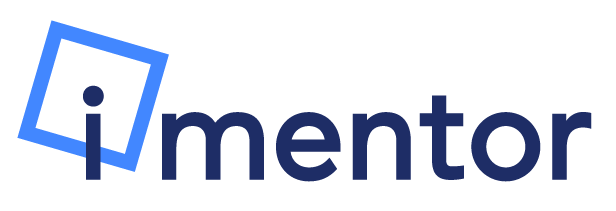Program Managers are constantly trying new strategies and techniques to improve the quality of program delivery. However, the fast-paced nature of our work presents three common pitfalls:
- Too often, we deploy the first solution that comes to mind when faced with a problem/challenge instead of thoroughly understanding the problem/challenge and crafting a thoughtful strategy to navigate it.
- Documentation is another one of the commonly forgotten tasks in fast-paced environments, resulting in that valuable learning living and dying with the person that learned it. This means iMentor is constantly re-learning the same lessons over and over because previous efforts were not documented and shared.
- Project scoping (planning) is also often forgone in the rush of program delivery. Outlining the problem/challenge, a potential solution, and the process taken to deploy the solution provides a great framework for evaluating where a strategy/innovation went well and where it can be improved. Diligently recording this information can also act as a road map for other staff that would like to test the same strategy!
The purpose of the Strategic Innovation Add-On is to accompany the weekly PM-manager check-in when a PM is testing a strategy/innovative implementation technique to navigate a challenge they are experiencing in the field. The document is designed to support PMs and managers in testing innovative strategies/implementation techniques. The process is slit into 5 steps, listed below (click the links to skip to details about the step).
- Clearly identify the problem/challenge trying to be solved;
- Investigate the root cause of the challenge and craft a potential solution;
- Scope the project of implementing the strategy/innovation;
- Evaluate the effectiveness of the strategy/innovation;
- Document the resources used to implement the strategy/innovation.
Because this is a fairly sizable amount of information in this add-on, PMs are meant to use this document to plan and evaluate the strategy - whereas the regular weekly check-in on that work can show up in the "Other Topics to Discuss" section of the baseline check-in document. PMs and manager can revisit and complete the full add-on at the conclusion of the strategy period.
Sections of the Add-On
Clearly identify the problem/challenge trying to be solved
The first step to developing and testing strategies/innovative implementation techniques is defining the problem/challenge. It is important to be very clear about the challenge so that, when the time comes to craft a solution, it will be focused on the desired pain-point. This short section reserves space for articulating the problem/challenge.
The Strategic Innovation Add-On includes a generic sample problem/challenge to help frame how the template can be used.
Investigate the root cause of the challenge and craft a potential solution
One of the most common pitfalls of our work is that we often gravitate to the first solution that comes to mind when facing a problem/challenge. This section is designed to foster a deeper consideration of the problem/challenge before crafting a potential solution to ensure efforts are appropriately targeted.
The Strategic Innovation Add-On includes instructions and working space for engaging in 5 Why Analysis, an iterative interrogative technique to explore the cause-and-effect relationships underlying a particular problem. This process is meant to support PMs and managers in crafting a targeted strategy/innovation to address the root cause of the identified problem/challenge.
Scope the project of implementing the strategy/innovation
Because of the fast-paced nature of our work, project scoping (planning) is often one of the first things to be forgotten. This section is designed to ensure that stakeholders are identified, milestones are established and that data is available to evaluate the effectiveness of the strategy/innovation.
This section of the Strategic Innovation Add-On includes instructions and working space to support PMs and managers in select a method (data source) to evaluate the effectiveness of the strategy/innovation, identify stakeholders and establish milestones in an effort to ensure the strategy/innovation is implemented as designed/intended.
Evaluate the effectiveness of the strategy/innovation
Once the project is over, it is important to revisit the aim statement generated in step 2. Depending on the outcome of the strategy, PMs and managers will want to discuss what the next steps should be and this section is designed to ensure that discussion happens.
This of the Strategic Innovation Add-On includes a space to record baseline data (i.e., state of affairs prior to deploying the strategy/innovation) and comparison data (i.e., change in baseline data after deploying the strategy/innovation) as well as a place for qualitative context. This section also prompts PMs and managers to select a next step, each of which is described briefly in the add-on.
Document the resources used to implement the strategy/innovation
Too often, PMs innovate in the field and learn new and more effective ways to engage pairs in service of programmatic outcomes. However, documentation is another one of the commonly forgotten tasks in fast-paced environments, resulting in that valuable learning living and dying with the person that learned it. This section, in addition to the entire document, is designed to act as a “road map” to share the strategy/innovation with colleagues or for others to follow independently if they would like to test the same strategy/innovation in their own working context.
This section includes a space for PMs to document and resources/materials generated to deploy the strategy/innovation for institutional knowledge purposes.
If a strategy/technique proves to be extremely effective/scalable, PMs and managers shoudl email their completed Strategic Innovation Add-On document to the Director of Program Quality and Implementation by clicking HERE.

